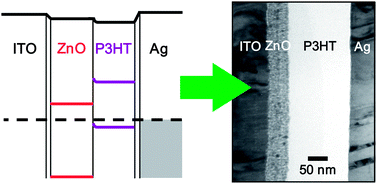Device function in organic electronics is critically governed by the transport of charge across interfaces of dissimilar materials. Accurate measurements of energy level positions in organic electronic devices are therefore necessary for assessing the viability of new materials and optimizing device performance. In contrast to established methods that are used in solution or vacuum environments, here we combine Kelvin probe measurements performed in ambient environments to obtain work function values with photoelectron spectroscopy in air to obtain ionization potential, so that a complete energy level diagram for organic semiconductors can be determined. We apply this new approach to study commonly used electron donor and acceptor materials in organic photovoltaics (OPV), including poly(3-hexylthiophene) (P3HT), [6,6]-phenyl C61 butyric acid methyl ester (PCBM), and ZnO, as well as examine new materials. Band alignments across the entire OPV devices are constructed and compared with actual device performance. The ability to determine interfacial electronic properties in the devices enables us to answer the outstanding question: why previous attempts to make OPV devices using 6,13-bis(triisopropylsilylethynyl) (TIPS)-pentacene as the electron donor were not successful.

You have access to this article
 Please wait while we load your content...
Something went wrong. Try again?
Please wait while we load your content...
Something went wrong. Try again?


 Please wait while we load your content...
Please wait while we load your content...